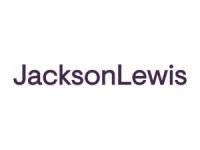In today’s hybrid and remote work environment, organizations are increasingly turning to digital employee management platforms that promise productivity insights, compliance enforcement, and even behavioral analytics. These tools—offered by a growing number of vendors—can monitor everything from application usage and website visits to keystrokes, idle time, and screen recordings. Some go further, offering video capture, geolocation tracking, AI-driven risk scoring, sentiment analysis, and predictive indicators of turnover or burnout.
While powerful, these platforms also carry real legal and operational risks if not assessed, configured, and governed carefully.
Capabilities That Go Beyond Traditional Monitoring
Modern employee management tools have expanded far beyond “punching in,” reviewing emails, and tracking websites visited. Depending on the features selected and how the platform is configured, employers may have access to:
- Real-time screen capture and video recording
- Automated time tracking and productivity scoring
- Application and website usage monitoring
- Keyword or behavior-based alerts (e.g., data exfiltration risks)
- Behavioral biometrics or mouse/keyboard pattern analysis
- AI-based sentiment or emotion detection
- Geolocation or IP-based presence tracking
- Surveys and wellness monitoring tools
Not all of these tools are deployed in every instance, and many vendors allow companies to configure what they monitor. Some important questions arise, such as who at the company is making the decisions on how to configure the tool, what data is collected, is the collection permissible, who has access , how are decisions made using that data, and what safeguards are in place to protect the data. But even limited use can present privacy and employment-related risks if not governed effectively.
Legal and Compliance Risks
While employers generally have some leeway to monitor their employees on company systems, existing and emerging law, particularly concerning AI, along with considering best practices, employee relations, and other factors should help with developing some guidelines.
- Privacy Laws: State and international privacy laws (like the California Consumer Privacy Act, GDPR, and others) may require notice, consent, data minimization, and purpose limitation. Even in the U.S., where workplace privacy expectations are often lower, secretive or overly broad monitoring can trigger complaints or litigation.
- Labor and Employment Laws: Monitoring tools that disproportionately affect certain groups or are applied inconsistently may prompt discrimination or retaliation claims. Excessive monitoring activities could trigger bargaining obligations and claims concerning protected concerted activity.
- AI-Driven Features: Platforms that employ AI or automated decision-making—such as behavioral scoring or predictive analytics—may be subject to emerging AI-specific laws and guidance, such as New York City’s Local Law 144, Colorado’s AI Act, and AI regulations recently approved by the California Civil Rights Department under the Fair Employment and Housing Act (FEHA) concerning the use of automated decision-making systems.
- Data Security and Retention: These platforms collect sensitive behavioral data. If poorly secured or over-retained, that data could become a liability in the event of a breach or internal misuse.
Governance Must Extend Beyond IT
Too often, these tools are procured and managed primarily, sometimes exclusively, by IT or security teams without broader organizational involvement. Given the nature of data these tools collect and analyze, as well as their potential impact on members of a workforce, a cross-functional approach is a best practice.
Involving stakeholders from HR, legal, compliance, data privacy, etc., can have significant benefits not only at the procurement and implementation stages, but also throughout the lifecycle of these tools. This includes regular reviews of feature configurations, access rights, data use, decision making, and staying abreast of emerging legal requirements.
Governance considerations should include:
- Purpose Limitation and Transparency: Clear internal documentation and employee notices should explain what is being monitored, why, and how the information will be used.
- Access Controls and Role-Based Permissions: Not everyone needs full access to dashboards or raw monitoring data. Access should be limited to what’s necessary and tied to a specific function.
- Training and Oversight: Employees who interact with the monitoring dashboards must understand the scope of permitted use. Misuse of the data—whether for personal curiosity, retaliation, or outside policy—should be addressed appropriately.
- Data Minimization and Retention Policies: Avoid “just in case” data collection. Align retention schedules with actual business need and regulatory requirements.
- Ongoing Review of Vendor Practices: Some vendors continuously add or enable new features that may shift the risk profile. Governance teams should review vendor updates and periodically reevaluate what’s enabled and why.
A Tool, Not a Silver Bullet
Used thoughtfully, employee management platforms can be a valuable part of a company’s compliance and productivity strategy. But they are not “set it and forget it” solutions. The insights they provide can only be trusted—and legally defensible—if there is strong governance around their use.
Organizations must manage not only their employees, but also the people and tools managing their employees. That means recognizing that tools like these sit at the intersection of privacy, ethics, security, and human resources—and must be treated accordingly.




 />i
/>i
